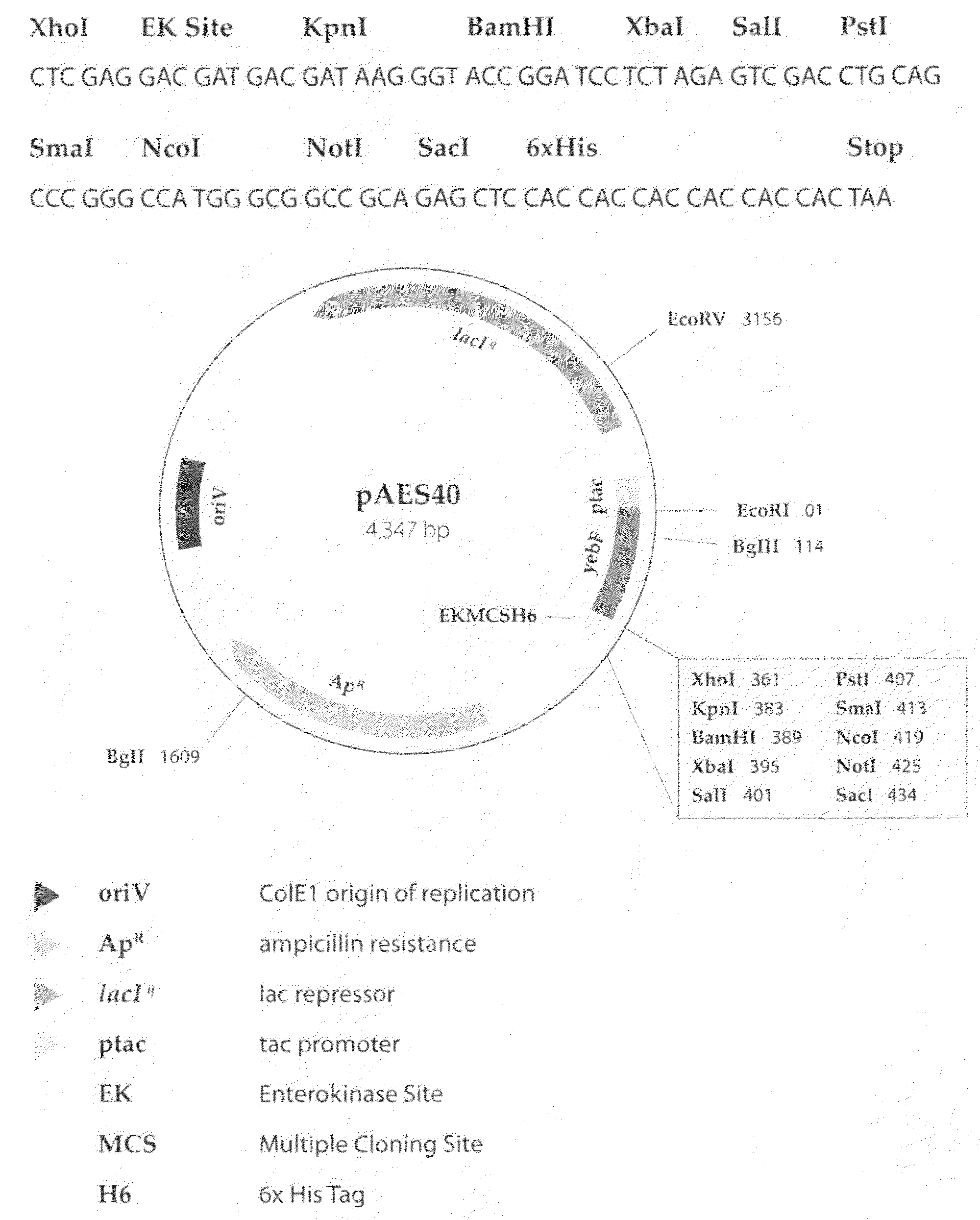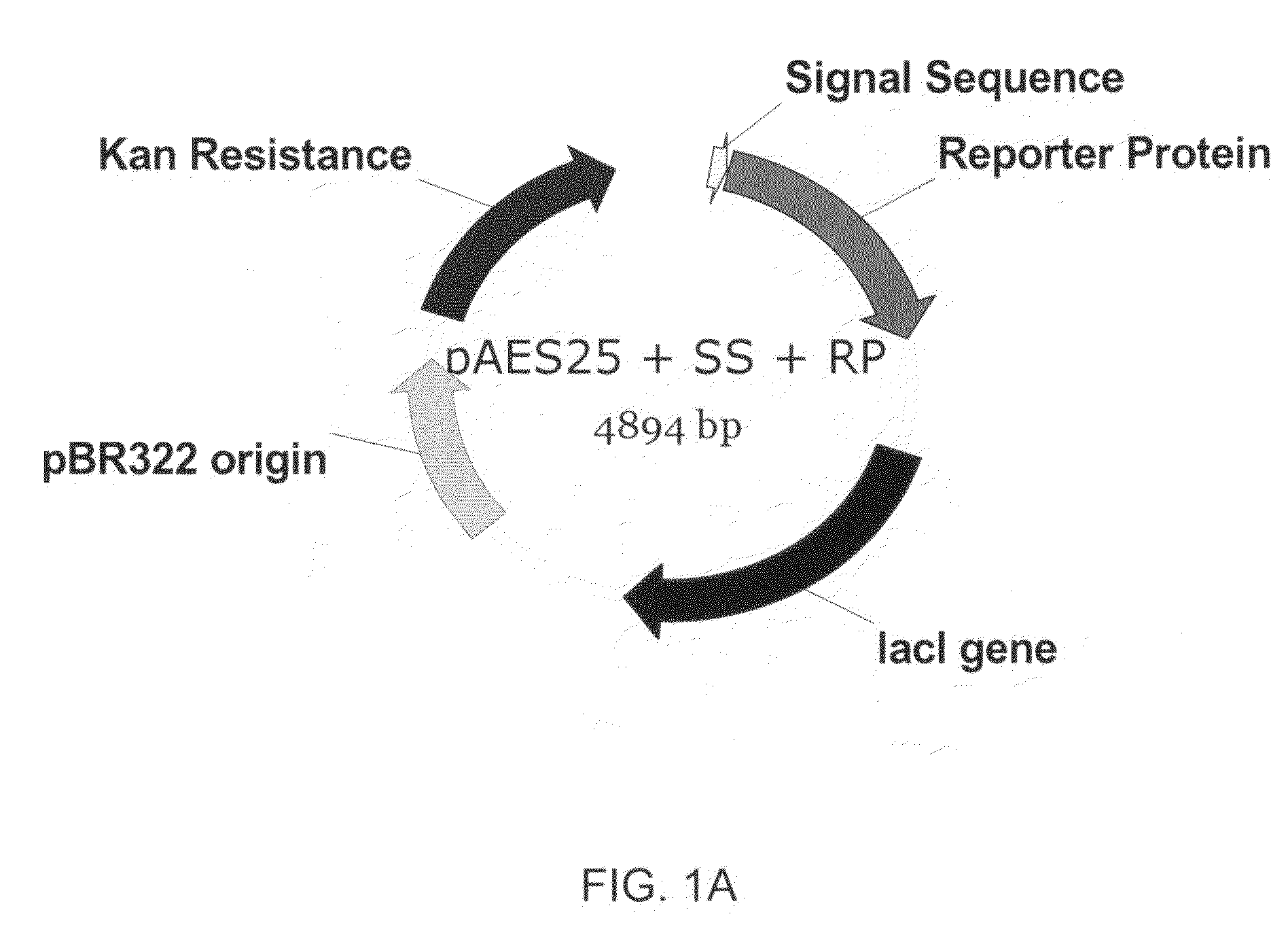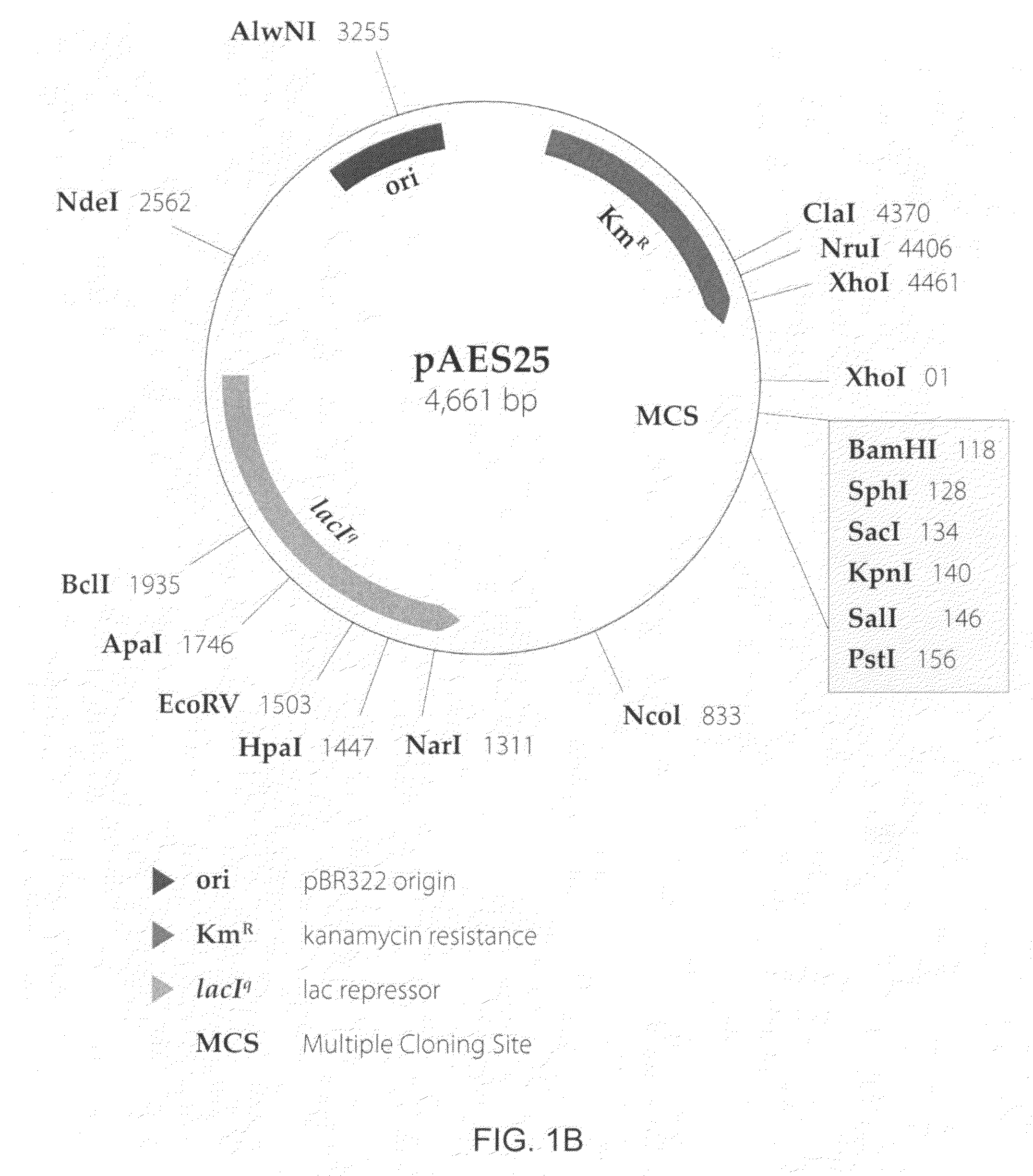Methods for optimizing the secretion of protein in prokaryotes
- Summary
- Abstract
- Description
- Claims
- Application Information
AI Technical Summary
Benefits of technology
Problems solved by technology
Method used
Image
Examples
example 1
Secretion of Target Proteins into the Periplasm
[0066]To demonstrate that different proteins are exported differentially, the genes encoding alkaline phosphatase (PhoA) from E. coli and a streptavidin-luciferase hybrid protein (SA-Luc) were inserted downstream of the signal sequences. Each of these proteins is a marker for secretion into the periplasm. PhoA is only enzymatically active when exported to the periplasm (Manoil et al., 1990), and is non-functional if it accumulates in the cytoplasm. When SA-Luc (a heterologous semi-synthetic protein) is not exported, the protein forms inclusion bodies and does not exhibit biotin binding (streptavidin portion) or luminescent activity (luciferase portion).
[0067]Each of the expression vectors (carrying PhoA and SA-Luc fused to each of the signal sequences) was introduced into E. coli strain DH5α (phoA mutant). Expression of each protein was measured. For PhoA, the cells were cultured on solid medium containing isopropyl-thiogalactopyranosid...
example 2
Recombinant Protein Production Utilizing YebF
[0069]The YebF export function works in several commonly used strains of E. coli for the expression of heterologous proteins including HB101, HMS174, BLR and TOP10. The plasmids pYebF-AmyH6 / MS (“YebF-Amy”) and pYebF-PhoAH6 / T7 (“YebF-PhoA”) were constructed according to U.S. Patent Application Publication No. US 2006 / 0246539 A1 to Weiner et al. (the contents of which are incorporated herein by reference in its entirety) E. coli strains carrying these plasmids were cultured from single colonies in 2 ml Terrific Broth medium (Tartof and Hobbs, 1987) supplemented with 100 μg / ml ampicillin overnight at 30° C. The overnight cultures were subcultured into 50 ml of fresh medium and incubated at 30° C. until the OD600 reached ˜0.6. A 6 ml sample was removed and IPTG was added to the remainder of the culture to a final concentration of 0.05 mM. The incubation continued for 22 hours. Samples were removed at 3, 8 and 22 hours post-induction and treat...
example 3
Identification of Mutations Affecting YebF Export
[0074]In order to identify mutations affecting YebF export, a simple genetic screen was devised. The screen uses medium containing Azure-starch to determine the amylose degrading phenotype of colonies. Starch degradation is indicated by the formation of a clear zone around the Amy-positive colonies. Amylase-negative colonies do not form clear zones and the medium remains uniformly blue in color. Wild-type E. coli is Amy-negative, whereas strains expressing the YebF-Amy fusion are Amy-positive. To develop the strain needed to screen for cis- and trans-acting mutations of YebF export function, a plasmid carrying a YebF-Amy fusion was prepared. This construct, designated pYebF-Amy2 (FIG. 8), differs from the original YebF-Amy fusion in that the wild-type yebF gene can be removed and replaced with DNA fragments containing mutations in the yebF coding sequence while retaining the integrity of the YebF-Amy fusion. This strain, when cultured...
PUM
| Property | Measurement | Unit |
|---|---|---|
| Strain point | aaaaa | aaaaa |
Abstract
Description
Claims
Application Information
 Login to View More
Login to View More - R&D
- Intellectual Property
- Life Sciences
- Materials
- Tech Scout
- Unparalleled Data Quality
- Higher Quality Content
- 60% Fewer Hallucinations
Browse by: Latest US Patents, China's latest patents, Technical Efficacy Thesaurus, Application Domain, Technology Topic, Popular Technical Reports.
© 2025 PatSnap. All rights reserved.Legal|Privacy policy|Modern Slavery Act Transparency Statement|Sitemap|About US| Contact US: help@patsnap.com



